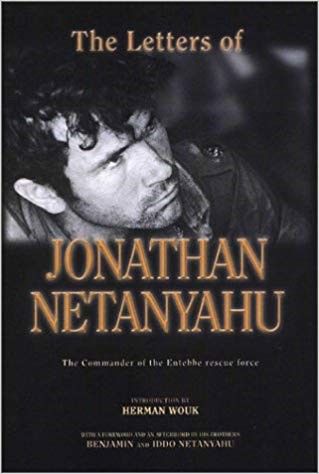Anxiety
Heroism in Self and Society
A new avenue for psychological research and practice?
Posted February 19, 2019
Jonathan (“Yoni”) Netanyahu is a consensually revered national hero in Israel. The deceased brother of our (controversial) Prime Minister is embraced by all strands of the Zionist movement, left-to-right, as an epitome of the Sabra, “New Jew”: courageous, determined, fiercely entrenched in his/her own land, kind and compassionate towards his/her comrades, but, at the same time, soft-hearted and lyrical (Almog, 2000). Everything about the life of Yoni is consistent with this description of the Sabra, a life that was taken during the Entebbe Operation, one of the most outstanding military operations of the Israeli Defense Forces.1 I strongly urge the reader to delve into “Yoni’s Letter”, a collection of the hero’s letters to people in his life. It reads like an Odyssey (Netanyahu & Netanyahu, 2001).

When you do read Yoni’s letter, you will inevitably discover, along with the sparkling intelligence, scrupulous integrity, kindness, and poetics, an overwhelming sadness. Despite being surrounded by loving family members, friends, and lovers, Jonathan Netanyahu was a profoundly lonely and tortured young person. Indeed, according to some sources, he was downright clinically depressed prior to the Entebbe Operation (Zonder, 2006), and he wasn’t the only great military leader of this kind: courageous, fierce, and yet depressed (Ghaemi, 2012). Which makes one wonder: Is there something inherent to heroism that necessitates inner turmoil and pain?
During the recent decade or so, the psychological science of heroism has mushroomed (Allison, 2015; Jayawickreme & Di Stefano, 2012). Most lay, theoretical, and empirical depictions of heroism and heroes are positive, in that both are associated with bravery, altruism, and courage (Kinsella, Ritchie, & Igou, 2015; Peterson & Seligman, 2004). However, some aspects of heroism and heroic acts constitute symptoms of psychopathology such as narcissism (Franco, Blau, & Zimbardo, 2011). This is what I also see in the clinic when treating young people who manifest heroic features alongside tremendous suffering (Shahar, 2013).
What I sought to understand in relation to the concept of heroism is not so much the morphology of the heroic act, but the psychological dynamics underlying individuals’ self-perceptions as heroes. That is, I aimed to shed light on the wishes, needs, and intentions of several individuals to construe themselves as heroic. From this research aim, a nine-item self-report questionnaire was developed, titled Shahar’s Heroic Self Scale (SHERS; Shahar, 2013). This questionnaire captures three heroic self-representations: (1) self-as-conqueror, pertaining to the experience of life as a set of obstacles and challenges that could and should be conquered, (2) self-as-savior, referring to a personal determination to save others from plights, and (3) heroic identification, tapping individuals’ tendencies to identify with cultural heroes. SHERS demonstrated adequate psychometric properties and has been used thus far in eight published studies (Shahar, 2013; Itamar & Shahar, 2014; Israeli, Itamar, & Shahar, 2018). The overarching pattern emerging from these studies is somewhat different than the one initially hypothesized (Shahar, 2013). Specifically, heroic identification emerges as a clear-cut vulnerability factor, strongly associated with a myriad of psychiatric symptoms. Self-as-savior lags closely behind, demonstrating vulnerability features, albeit less consistently than heroic identification. Finally, self-as-conqueror does not appear to be implicated in psychological vulnerability. Instead, it seems to include resilience-related aspects such as self-efficacy.
Perhaps the most informative study that was based on the SHERS was conducted as part of Hagar Israeli’s M.A. thesis (Israeli et al., 2018). Specifically, we assessed 812 Israeli adults pre- and post-Operation Protective Edge, which occurred in Israel between July 8, 2014 and August 26, 2014. The operation involved extensive Israeli air strikes, ground fighting in Gaza, and massive, incessant rocket fire from Gaza to Israel. We found that pre-operation heroic identification prospectively predicted increased anxious mood, both directly and more specifically under major stressful life events. Self-as-savior predicted an increased anxious mood under high levels of perceived-stress related to the missile attacks. We surmise that heroic identification reflects a pathological character structure that compensates for perceived deficiency with manic-narcissistic defense mechanisms (Israeli et al., 2018). As for the vulnerability of self-as-savior, we interpret it to reflect the particular Israeli situation: In a country established upon solidarity and activism, when civilians are bombarded without being able to assist their countrymen and women, seeing oneself as a savior may lead to anxious mood.
Research on heroism in general, and specifically using the SHERS framework, is still in its infancy. It does, however, purport to bridge cultural norms, personality dynamics, and health, both mental and physical. For me, in particular, such research illustrates a penetrating insight into the dialectics of risk and resilience (Shahar, Elad-Strenger, & Henrich, 2012): What we deem sublime, may actually hurt us.
Footnote
1 During Operation Entebbe, Israeli elite military forces raided Entebbe Airport in Uganda and rescued Israeli passengers who were taken captive by terrorists. Jonathan Netanyahu, the commander of the ground forces, was shot and killed during the operation.
References
Allison, S. T., (2015). The initiation of heroism science. Heroism Science, 1, 1-8.
Almog, O. (2000). The Sabra: The creation of the New Jew. Berkeley, CA: University of California Press.
Franco, Z. E., Blau, K., & Zimbardo, P. G. (2011). Heroism: A conceptual analysis and differentiation between heroic action and altruism. Review of General Psychology, 15(2), 99–113. https://doi.org/10.1037/a0022672.
Ghaemi, N. (2012). A first-rate madness: Uncovering the links between leadership and mental illness. London, UK: Penguin.
Israeli, H., Itamar, S., & Shahar, G. (2018). The heroic self under stress: Prospective effects on anxious mood in Israeli adults exposed to missile attacks. Journal of Research in Personality, 75, 17-25.
Itamar, S., & Shahar, G. (2014). 2014. In A. Besser (Ed.), Handbook of the psychology of narcissism; diverse perspectives. Chapter 4: Narcissism and heroism: A rendezvous? (pp 67–78). New York: Nova Science Publishers .
Jayawickreme, E., & Di Stefano, P. (2012). How can we study heroism? Integrating persons, situations and communities. Political Psychology, 33(1), 165–178. https://doi.org/10.1111/j.1467-9221.2011.00861.x.
Kinsella, E. L., Ritchie, T. D., & Igou, E. R. (2015). Lay perspectives on the social and psychological functions of heroes. Frontiers in Psychology, 6, 130. https://doi.org/10.3389/fpsyg.2015.00130.
Netanyahu, B., & Netanyahu, I. (Eds.) (2001). The letters of Jonathan Netanyahu: The commander of the Entebbe rescue force. Jerusalem, Gefen Publishing House.
Peterson, C., & Seligman, M. E. P. (2004). Character strengths and virtues. Washington, DC: American Psychological Association & Oxford University Press. https://doi.org/10.5860/choice.42-0624
Shahar, G. (2013). The heroic self: Conceptualization, measurement, and role in distress. International Journal of Cognitive Therapy, 6(3), 248–264. https://doi.org/10.1521/ijct.2013.6.3.248.
Shahar, G., Elad-Strenger, J., & Henrich, C. C. (2012). Risky resilience and resilient risk: The key role of intentionality in an emerging dialectic. Journal of Social & Clinical Psychology, 31, 618–640. https://doi.org/10.1521/jscp.2012.31.6.618.
Zonder, M. (2006). The elite unit of Israel, Sayeret Matkal. Tel-Aviv: Keter (Hebrew).


